
We hope that each of you, our readers, will enjoy and appreciate this article we present about these 5 Beautiful Black Sea Species. It was our pleasure to gather the information for you. May it provide you with both education and increased awareness.
Certainly, these few species listed herein represent only a portion of the similar marvels in this region. It’s our belief, though, that they serve as excellent representations of the wonders that exist. Check out some of our other articles for similar marvels.
European Eel
European Eel Facts
- Starting off this article about 5 Beautiful Black Sea Species we present the intriguing creature holding the name of the European Eel.
- This creation of Nature and evolution most frequently goes by the somewhat deceptive common name used herein. It’s also known by a variety of alternate monikers. These include such terms as River Eel, Common Eel, Glass Eel, and Weed Eel.
- Among professionals, such as researchers, though, it’s usually referred to by its technical name. That’s the strangely repetitive term of Anguilla anguilla. As such titles go, though it may seem odd, it’s actually fairly simple, compared to other such names.
- The animal originally bore another technical name, however. In fact, in the annals of science it’s been classified under several. The original term assigned to it, though, was that of Muraena anguilla. This ocurred due to reclassification of the remarkable species.
- The credit for the original name, though, goes to the renowned Swedish researcher, Carl Linnaeus. That’s because he made the first known official recognition of it as a separate and distinct species. This scientifically noteworthy deed he accomplished in 1758.
- Sadly, however, its numbers appear to have been drastically reduced. This unfortunate fact seems to hold true throughout the entirety of its known natural range. The IUCN, therefore, presently lists the European Eel as Critically Endangered on its Red List.
- Factors contributing to its plummeting numbers include migration barriers, such as dams, and overfishing. It also faces threats posed by changes to its habitat, largely due to human activities. And, it also faces the threat of climate change, like all of us.
European Eel Physical Description
The remarkable European Eel certainly draws the attention of those who encounter it. That’s simply because it’s a fascinating animal. For most individuals, though, the most impressive thing about this creature is its physical appearance. That includes its sheer physical size.
Specimens attain a respectable growth. Like most its kindred, it also displays only an extremely small degree of the physiological characteristic of sexual dimorphism. In its case, also as in other eels, the only noticeable difference occurs in the structure of the gonads.
Individuals of both genders appear otherwise indistinguishable to the non-professional. On average, members of this species attain a body length of 2.0 – 2.6 ft (60 – 80 cm). Exceptional specimens do occur, however. These sometimes reach up to 59 in (1.5 m).
As is immediately obvious to the observer, the body develops as highly elongated. That’s typical of all its relatives. This particular species, though, has a somewhat more rounded shape than some others. This trait gives the creature a more snake-like shape than some eels.
Other physical traits of the European Eel also remain quite similar to the rest of its Order. This includes the presence of small, slit-like gills. It also displays pectoral fins, but not pelvic. It’s overall color scheme consists of yellowish-brown, mainly on the stomach and sides.
- Kingdom: Animalia
- Phylum: Chordata
- Class: Actinopterygii
- Order: Anguilliformes
- Family: Anguillidae
- Genus: Anguilla
- Species: A. anguilla
European Eel Distribution, Habitat, and Ecology
The intriguing European Eel evolved as native to a much broader range of the globe than its common name suggests. That’s due to the fact that this marvel of Nature developed as endemic to extensive areas of the Atlantic Ocean. Within that, though, it’s range is specific.
More precisely, the vast majority of specimens make their home in the coastal regions. This does include in Europe, of course, from the White Sea to the Black Sea. It also appears from Scandinavia to Morocco. This gives it a simultaneously broad yet selective range.
Defining its habitat also qualifies as complicated. This holds true due to the nature of its evolutionary path. The greatest portion of its population begin their lives in the main spawning area. This region lies within the section of the ocean known as the Sargasso Sea.
Early in their larval stage, however, individuals migrate to inland, freshwater waterways. These include various lakes and rivers. Some, though, also appear in more brackish waters, such as estuaries. They return to the sea, though, to spawn. Each then dies soon after.
Mature specimens of the European Eel develop as nocturnal in their habits. At night, each hides in the mud, or stones and such. They typically emerge only at night. During most of its life, each individual lives a mainly solitary existence. The lone exception’s during spawning.
It feeds on a wide variety of prey. This mostly consists of molluscs, worms, crustaceans, and insects. It also consumes carrion opportunistically. It itself has few natural predators. Its lifespan in the wild is unknown, but captive specimens live as much as 80 years or more.
Spiny Dogfish
Spiny Dogfish Facts
- Next up in this compilation of these 5 Beautiful Black Sea Species is the impressive fish known as the Spiny Dogfish.
- The quite evocative term it’s been given perfectly serves as one of the common names for one of the best known members of the Squalidae Family of sharks. The animal also remains known by several other alternate names, though.
- These include such equally distinctive names as the mud shark, the spurdog, and the piked dogfish, just to name a few of them. Among professional researchers, though, the amazing creature bears the scientific name of the Squalus acanthias.
- The first known official recognition of this impressive animal as a separate and distinct species occurred in the year 1758. That scientifically important event took place as a result of the efforts of the Swedish zoologist Carl Linnaeus.
- Unfortunately, its situation appears to be somewhat unstable. Due to its population status, as well as other factors, the IUCN currently lists it as Vulnerable. This lamentable status appears on the organization’s Red List of Threatened Species.
- The multiple and varied dangers facing the Spiny Dogfish continue to escalate, regrettably. Among these, over fishing continues to be the greatest threat to its continued existence, since the shark constitutes a commercially fished species.
- Other, newer factors also now pose serious, potentially terminal threats to the creature, though. Habitat loss, due to the actions of man threaten to greatly reduce its range. The ongoing effects of climate change also now pose a great danger for it.
Spiny Dogfish Physical Description
It bears noting that, while remarkably impressive in many ways, sheer size isn’t the strong suit of the amazing Spiny Dogfish. To the great surprise of many people, this marvel of Nature actually remains a very small example of its Order, the Squaliformes.
The species does, however, display a respectable degree of the physiological characteristic known as sexual dimorphism. In the case of this particular representative of its kind, this trait manifests itself in terms of size, with females being slightly greater in length.
Although exceptional individuals do exist, of course, adult males attain an average body length only equaling about 39 in (1 m). Mature females of this fascinating variety of shark, on the other hand, reach an average length of roughly 62.6 in (1.59 m).
Otherwise, both genders strongly resemble each other, presenting the same basic color pattern. Members of both sex display an overall grayish-brown shade, with the upper half of the body being a darker shade, while the underside remains much lighter in color.
It’s the presence of one particular feature, though, that gives the Spiny Dogfish its unique common name. That’s the existence of two very sharp spines that appear on the dorsal area, which the resourceful animal uses as a means of self-defense when threatened.
- Kingdom: Animalia
- Phylum: Chordata
- Class: Chondrichthyes
- Order: Squaliformes
- Family: Squalidae
- Genus: Squalus
- Species: S. acanthias
Spiny Dogfish Distribution, Habitat, and Ecology
To the great surprise of some people, the remarkable Spiny Dogfish inhabits a comparatively wide range of the oceans of the world. Populations of this fascinating fish inhabit many regions. This includes the Pacific, the Atlantic, and also portions of the Indian Ocean.
In whatever part of the world populations of the animal appear, however, all individuals maintain the same basic pattern of behavior regarding choice of habitat. More precisely, this animal evolved to live primarily as a bottom-dwelling species.
With that being said, specimens of this intriguing type of shark have been observed at depths of as much as 2,300 ft (700 m). The great majority of observed groupings or individuals nevertheless make their home at depths of between 160 – 490 ft (50 – 149 m).
Like all other known sharks, the Spiny Dogfish feeds entirely as an aggressive carnivore. Despite its comparatively small size, this animal is no exception to this. It actively hunts a wide variety of prey, including fish, squid, shrimp, crabs, and even jellyfish.
Though some specimens travel singly, the vast majority of members of this species appear in large packs, that can number in the thousands. After mating, live birth occurs an average of an astonishing 22 – 24 months later. A typical lifespan averages 35 – 54 years.
Common Bottlenose Dolphin

Common Bottlenose Dolphin Facts
- Appearing in the third spot in this gathering of 5 Beautiful Black Sea Species, the Common Bottlenose Dolphin does so only due to random selection.
- This magnificent ocean-dwelling creation of evolution generally goes by the intriguing name because of its prevalence. It does have a very similar alternate general name, though. That’s the informative moniker of Atlantic bottlenose dolphin.
- Within scientific circles, however, it’s better known by its technical name. Fortunately for the layperson, that’s the relatively easy to pronounce term of Tursiops truncatus. No matter which term one chooses, it remains a beautiful and impressive creature.
- It received that official name due to the efforts of the English naturalist, George Mantagu. He accomplished the first recorded acknowledgement of it as a separate and distinct species. This scientifically noteworthy act occured in the year 1821.
- The animal’s common name suits it, as it’s perhaps the most numerous, widespread, and best-known of all its kin. It also has perhaps the most extensive zone of habitation of its relatives. Sadly, it’s also the most popular in marine parks and aquariums.
- Unlike many others of its kind, the Common Bottlenose Dolphin seems to be maintaing a sufficient population base. That further appears to hold true throughout the entirety of its known range. The IUCN therefore currently list it as Least Concern.
- The animal nevertheless does face potential threats to its existence, at least. In this, the same dangers exist as for other marine species. These include such factors as active hunting and accidental bycatch. Doubtless, though, its greatest threat is climate change.
Common Bottlenose Dolphin Physical Description
One way in which the majestic Common Bottlenose Dolphin distinguishes itself from other dolphins around the world is sheer size. That’s due to the fact that this wonder of Nature ranks as the largest of all known beaked dolphins. That’s an impressive claim to fame.
It does follow the same pattern as other many other cetacea, though. That’s because the fabulous animal does display a moderate degree of the physiological trait of sexual dimorphism. In its specific case, this trait manifests itself in terms of simple physical size.
Males generally attain a greater length and body mass than their female counterparts. In most instances, though, the difference isn’t greatly significant. Overall, both measurements vary significantly, often following different ranges. This includes both genders, as well.
As a general rule, however, individuals reach a length of between 6.6 – 13.1 ft (2 – 4 m). Weights also naturally vary accordingly. This ranges from 330 – 1,430 lb (150 – 650 kg). Exceptional specimens do occur, though, in both categories, regardless of gender.
In coloring, the Common Bottlenose Dolphin presents a nearly uniform gray shade. Slight variations occasionally present themselves in individuals, however. Upon close inspection, however, many present a slightly lighter shade on the underside of the body.
The cetacea further possesses a short, wel-defined nose. Often compared to a bottle, this serves as the source of the common name. Its neck evolved as more flexible than its cousins, too. That’s because five of their seven vertebrae aren’t fused, unlike other dolphins.
- Kingdom: Animalia
- Phylum: Chordata
- Class: Mammalia
- Order: Artiodactyla
- Family: Delphinidae
- Genus: Tursiops
- Species: T. truncatus
Common Bottlenose Dolphin Distribution, Habitat, and Ecology
Thankfully, the Common Bottlenose Dolphin evolved as native to a truly extensive range. In fact, it lives in marine waters across much of the globe. Incredibly, this mammal makes its home in every portion of the planet’s oceans, with the exception of the polar regions.
This means the creature is equally at home in either tropical, subtropical, or temperate marine waters. Experts estimate its current global population to be approximately 600,000. It also migrates great distances, either individually or in groups of various size
Intriguingly, groups of the cetacean live in groupings both near the shore and further out to sea. In this repsect, the two differing concentrations display differing habitat preferences. Those populations living further out tend to undertake the more significant migrations.
Those members of the species residing closer to shore typically migrate less often, and for shorter distances. These same specimens also adapt to warm, shallower waters. This frequently includes such varied areas as lagoons, estuaries, bays, and even harbors.
Again following the pattern established by its many kin, the Common Bottlenose Dolphin lives as a very social species. Most specimens live in small groups called pods. These groups average 15 in number, but sometimes exceed 100 members. Lone individual are rare.
Its diet consists mainly of shrimp, squid, eels, and a wide range of fish species. The mammal hunts using echolocation, and does so effectively. The pods often hunt as a team, increasing their effectiveness. It has few predators of its own. These mainly include orcas and sharks.
Harbor Porpoise
Harbor Porpoise Facts
- Next up in this listing of 5 Beautiful Black Sea Species is the second mammal making an appearance, the amazing Harbor Porpoise.
- Perhaps most notably, this simple term easily serves as the most frequently used of the common names for a stunning marine mammal. Like many species, though, the stunning creature also goes by other names, in various portions of its native range.
- These terms include such diverse names as the nise, and, for unknown reasons, the somewhat humorous name of the puffing pig. Its official, scientific name, however remains that of the unique, and hard to pronounce, term of Phocoena phocoena.
- Regardless of which name one uses to refer to it, though, this magnificent creature represents one of only six or seven known surviving species of porpoise. The current discrepancy occurs due to ongoing debates over whether or not one is a subspecies.
- The first known scientific description of this marvelous cetacean occurred in 1758. This comparatively important footnote in scientific history also holds another distinction. That’s because it occurred at the hands of the Swedish zoologist, Carl Linnaeus.
- However, the animal itself had long been known to portions of mankind. That awareness, in fact, dates back to ancient times. In modern times, though, for the moment, the Harbor Porpoise appears to be maintaining a fairly sizable population.
- The IUCN nonetheless currently lists the mammal as Vulnerable. This status appears on its Red List of Threatened Species. Furthermore, this occurs due to concerns over the extreme vulnerability of the species to potential habitat loss and climate change.
Harbor Porpoise Physical Description
Although the Harbor Porpoise remains an impressive specimen of a marine cetacean, it does not earn that status due to size. Even among other porpoises, it’s smaller than average. Yet, it’s not the smallest of the porpoises. That distinction currently belongs to the Vaquita.
This fascinating mammal additionally displays a very slight degree of the physiological characteristic of sexual dimorphism. That remains a characteristic it shares with most of its relatives. In its case, though, that characteristic manifests itself in terms of mass.
That holds true since the females of this particular species have an average body weight equaling 25 – 30 percent more than the males. However, both genders attain roughly the same body length. The females, therefore, have a much thicker-bodied appearance.
In fact, each of the sexes typically reaches an average length that measures between 4.6 – 6.2 ft (1.4 – 1.9 m). In terms of weight, though, males reach an average weight of approximately, 134 lb (61 kg). Meanwhile, though, the bulkier females average a weight of 168 lb (76 kg).
The genders appear similar otherwise. The body of the animal develops as robust, being widest near the dorsal fin. The sides display a light gray, with speckling. The tail fin, back, flippers, and dorsal fin show a dark gray. The underside, though, displays a white in color.
- Kingdom: Animalia
- Phylum: Chordata
- Class: Mammalia
- Order: Artiodactyla
- Family: Phocoenidae
- Genus: Phocoena
- Species: P. phocoena
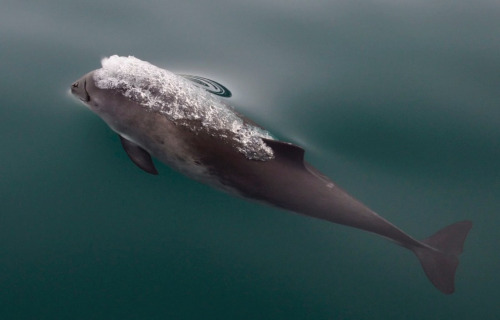
Harbor Porpoise Distribution, Habitat, and Ecology
Quite amazingly, the beautiful Harbor Porpoise has a uniquely broad range of natural habitation. It’s also simultaneously highly restricted in some ways, though. That somewhat confusing state of affairs occurs because of a combination of factors, however.
Firstly, the beautiful marine animal appears in parts of the Black Sea, the North Pacific, and the North Atlantic. Secondly, however, the animal further only appears in narrow bands. These, as it happens, most often extend along the coastal regions of the continents.
The greatest concentration appears along the coasts of northwest Europe. Its very name provides an indication of its habitat. That’s due to the fact that the cetacean only appears in shallow waters, often near, or even in, various harbors and bays in its region of habitation.
In point of fact, this stunning creature rarely dwells in waters possessing a depth of greater than 500 ft (152 m). The magnificent Harbor Porpoise also frequently travels inland waters. This extension of its range typically includes estuaries, and even far up rivers.
Throughout the entirety of its range, it feeds on a variety of prey. These mainly consist of small fish travelling in schools. But, it also consumes smaller squids and crustaceans on occasion. Understandably, though, its exact prey varies depending on individual location.
Quite sadly, reliable data about much of the life cycle of this fabulous creature presently remains in short supply. Yet, some evidence indicates that this animal prefers to stay within a limited area. This has the regrettable effect of leaving the marvel quite vulnerable.
The creature also appears that the impressive species lives a primarily solitary life. Most often, observed specimens appeared either alone, or in small groups of no more than 5 individuals. It also seems to possess a relatively short lifespan, measuring only 8 – 13 years.
Spiny Butterfly Ray
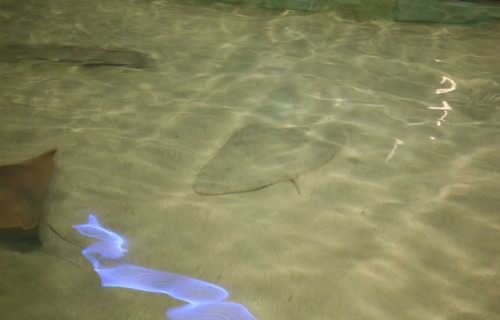
Spiny Butterfly Ray Facts
- Finishing up this compendium of these 5 Beautiful Black Sea Species we present the stealthy wonder known as the Spiny Butterfly Ray.
- This intriguing product of Nature and evolution most frequently goes by the surprising name due to its appearance. Yet that isn’t its only general title, though. The remarkable fish is also sometimes called the giant butterfly ray in parts of its range.
- Within scientific circles, however, it’s most typically referred to by its formal name. Fortunately for the layperson, that’s a comparatively simple to pronounce title compared to many. That’s because it bears the official moniker of Gymnura altavela.
- The creature received that appellation due to the efforts of the renowned Swedish zoologist, Carl Linnaeus. He accomplished the first official recognition of it as a separate and distinct species. That scientifically noteworthy event occurred in 1758.
- Regardless of which term one chooses to use when speaking of it, the animal remains an impressive species. It’s generally harmless to humans, though an individual stepping on it may receive a painful wound. Sadly, it’s actively fished in many parts of its range.
- Regrettably, the population base of the awesome Spiny Butterfly Ray appears to be diminishing. That unfortunate state also seems to hold true throughout the entirety of its territory. The IUCN thus currently lists it as Endangered on its published Red List.
- It faces numerous threats to its continued existence as a species. Due to human demand for its flesh, its population has decreased by an estimated 30% in recent decades. It also now faces the same danger posed by climate change as other species.
Spiny Butterfly Ray Physical Description
The Spiny Butterfly Ray clearly merits the appreciation it receives from many who encounter it in the wild. The appearance of the animal certainly qualifies as one reason for that notice. It’s also worth mentioning that it impresses the viewer with its measurements, too.
The creature further displays a certain degree of the phsyiological characteristic of sexual dimorphism. In its specific case, that trait manifests itself in terms of pure physical size. More precisely, females of the species attain a larger average size than the males do.
That gender-based difference, though, remains relatively minor. Overall, mature adults reach an average body width equaling roughly 6.56 ft (2 m). Exceptional specimens do naturally occur, however. Even these, though, rarely exceed these dimensions by any great amount.
The body structure has been described as lozenge-shaped. That’s due to the fact that it’s significantly broader than long. Its disk also generally displays a combination of strongly rounded corners and concave front margins. The tail, though, develops as short and slender.
The snout of the Spiny Butterfly Ray also presents as short, as well as relatively blunt. It has large numbers of small, conical teeth in the mouth. The mouth is also bordered on each side by a unique, tentacle-like appendage. Several serrated spines appear at the base of the tail.
In coloring, the skin commonly presents a background of dark brown on the upperside. Small spots, of either a darker or lighter shade, occasionally appears, too. These markings often show a marbled pattern. On the belly, the skin typically manifests an off-white shade.
- Kingdom: Animalia
- Phylum: Chordata
- Class: Chondrichthyes
- Order: Myliobatiformes
- Family: Gymnuridae
- Genus: Gymnura
- Species: G. altavela

Spiny Butterfly Ray Distribution, Habitat, and Ecology
The Spiny Butterfly Ray evolved a native to a region of the earth’s oceans that doesn’t surprise many who learn of it. That’s true since it developed as endemic to part of the Atlantic Ocean. Within that greater area, however, it lives in tropical and temperate waters.
Yet inside of that range, its distribution remains best described as scattered and spotty. In the western part of its range, it lives as far as Massachusetts, in the United States. To the south, its range extends as far as Argentina, in South America. It’s rare in the Gulf of Mexico.
It further displays extremely specific preferences regarding its choice of habitats. These severely limit is expansion possibilities. It appears only in shallow coastal waters, in many cases brackish in nature. On the Virginia coast, it’s common in the mouths of tidal creeks.
These regions must also possess yet another attribute for it to live there. That’s the presence of either muddy substrates or soft, sandy bottoms. It’s unknown at depths exceeding 328 ft (100 m). Many, in fact, often appear at depths measuring no more than 16 ft (5 m).
Like its relatives, the Spiny Butterfly Ray feeds as a pure carnivore. Its precise prey varies, depending on the exact region in which it lives. In general, though, it feeds on such creatures as squid, small sharks, fish, gastropods and crustaceans. It also hunts as an active predator.
Its own predators, however, remain relatively few in number. This most commonly includes larger sharks and marine mammals. Females give birth to live young, usually numbering up to eight. Lifespan varies, of course, but tends to average approximately eight years.
5 Beautiful Black Sea Species
We hope that each of you enjoyed reading, and hopefully learning from, this article we’ve written about these 5 Beautiful Black Sea Species. It’s also our hope that doing so has left you with either a new or renewed appreciation for such wonders of Nature.
Unfortunately, however, many of their kindred around the world now find themselves facing strong threats to their continued existence as a species. Many of those dangers, in fact, stem from the actions of mankind. We must do all we can to protect and preserve them all.
Check out our other articles on 4 Phenomenal Philippine’s Reptiles, 5 Marvelous Plants of Maine, Africa’s Many Geological Masterpieces, 4 Magnificent Birds of Mexico
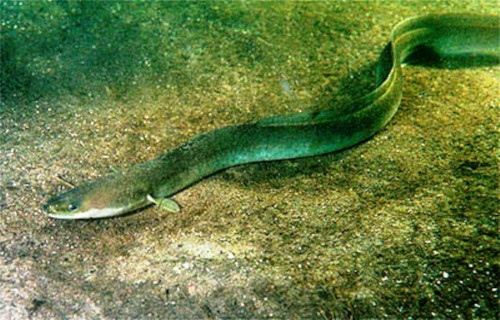
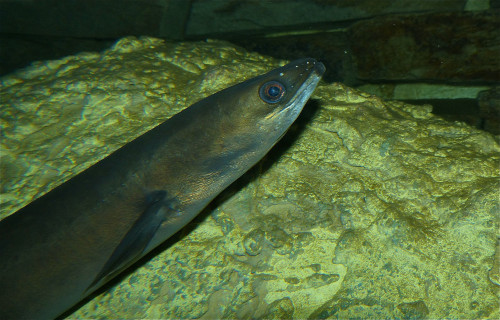
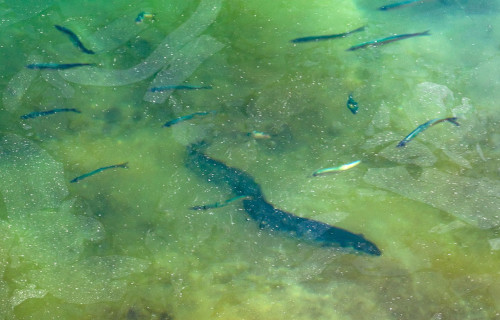
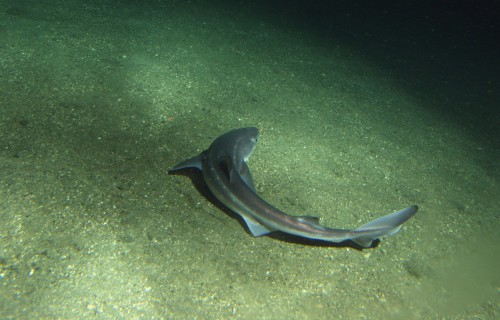
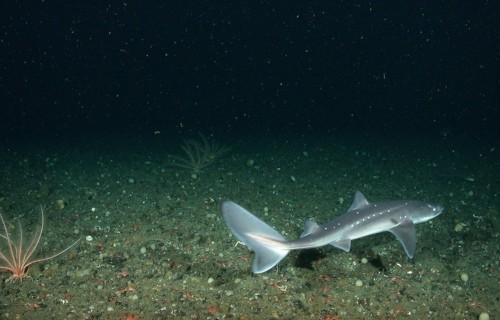
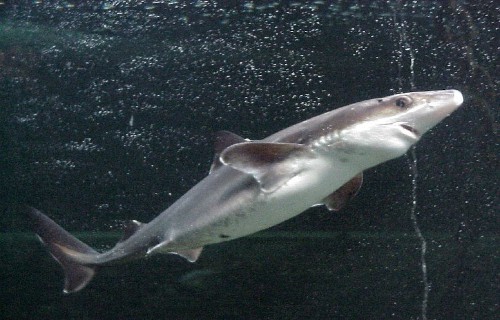
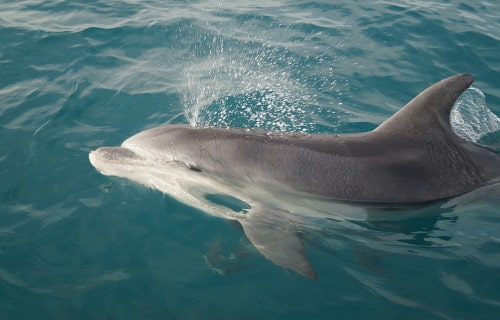
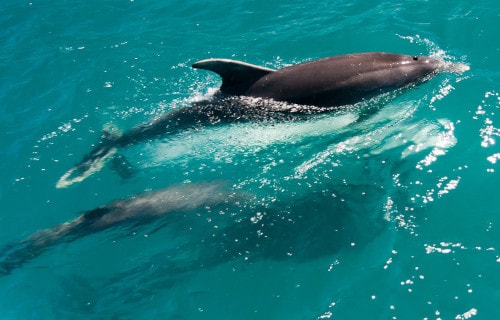
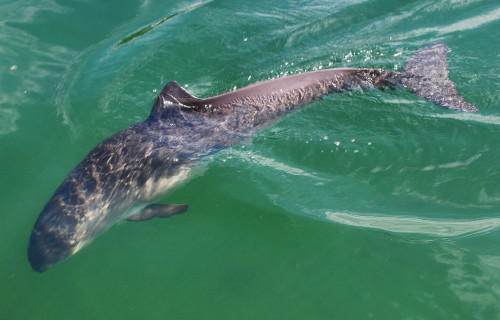
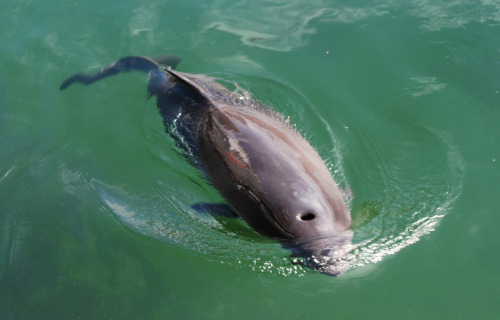
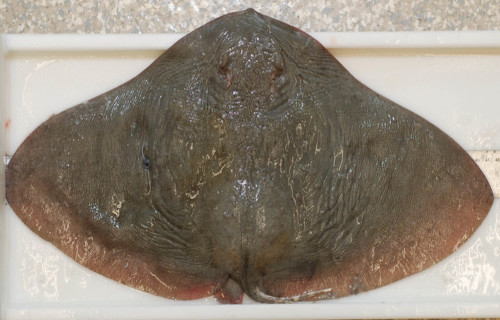









Leave a Reply